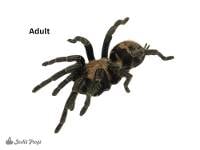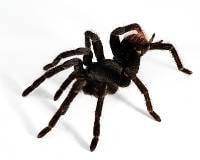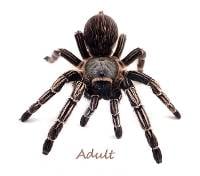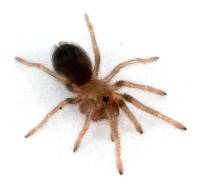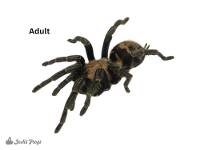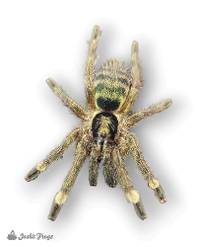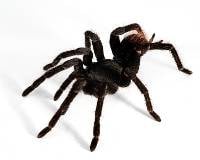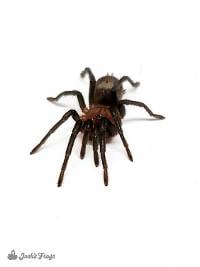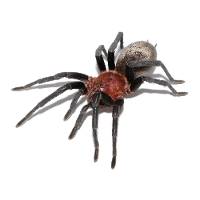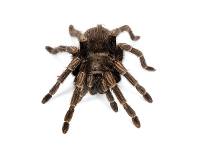Josh's Frogs
Tropical Terrestrial Tarantula Care
Tropical Terrestrial
Species in this category are humid and moisture dependent, their substrate will need to stay damp with at least one dry spot for them to go to.
How do I House My Tarantula? The surface area of the enclosure should be no less than two times the spider's diagonal leg span in one direction and three times the diagonal leg span in the other. The enclosure should be tall enough to accommodate 2"-3" of substrate for slings and 4"+ for adults. ABG mix, coco cradle, or Dig-It are good substrate options, but our Pet Bug Team prefers ABG all the way! We recommend against allowing your terrestrial spider more than two times their diagonal leg span as head space above their substrate as a fall from any higher could result in serious injury.
Temperature (°F):
This species thrives in the mid 70s to low 80s, so a temperature close to 80 degrees is ideal. Temperatures regularly dipping below 65 degrees, or spiking above 85 degrees should be avoided.
Humidity: These spiders thrive in a humid environment, the recommended ambient humidity should stay between 60 and 75%. This can be achieved by making sure the substrate is always at least slightly moistened. The enclosure sides and decor should be spritzed at least lightly around 2x a week to provide your animal droplets to drink from and keep humidity up. Do not spray your spider directly. Depending on your location, you may need tools such as a humidifier to achieve this environment. A hygrometer is a great way to monitor the humidity for your animal and see any needed adjustments .
Environmental Caution: When a damp environment has too little air circulation, this can lead to an anaerobic environment. Where the typical aerobic bacteria helps keep certain types of waste from building up, they are instead replaced by anaerobic bacteria whose waste is more likely to be toxic and harmful. This is often accompanied by a strong swampy smell. To guard against anaerobic environments, it is important to monitor and control moisture in the environment as well as air quality. One way to maximize both is to have plentiful live plants as the byproduct of photosynthesis is oxygen and water. Springtails can help keep the substrate aerated and break down waste so that the beneficial bacteria can more easily turn it into plant food.
What do I Feed My Tarantula? Crickets and roaches no bigger than the spider's carapace are great food choices. Babies should be fed every 4 - 7 days, and adults should be fed every 7 -10 days. Do not feed your animal for at least 7 days after it molts. Any food not eaten after 24 hours should be removed from the enclosure, it may stress out your tarantula or start to mold.
To introduce your pet into its habitat, remove the moss from the vial gently with tongs. You can gently coax the spider out when it is exposed or remove the top layer of moss and place the vial in the enclosure allowing the spider to wander out. Your spiderling may be stressed from shipment and either curl its legs around its front or attempt to bolt.
Applicable Tarantulas:
Costa Rican stripe-knee, Guatemalan tiger rump, Peruvian orange stripe, Gold Banded Sunburst Dwarf Tarantula, Trinidad olive (gold color form), Trinidad olive (olive color form), Brazilian blue, Blue Birdeater

